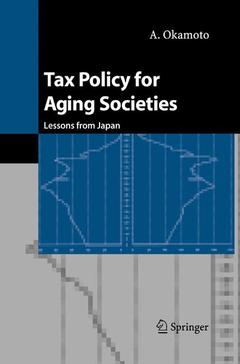Tax Policy for Aging Societies, 2004 Lessons from Japan
Auteur : Okamoto A.

Japan's population is aging faster than any other in the world, a situation that is causing serious problems for its society. Structural reforms, especially tax and social security reforms, to accommodate this drastic demographic change have become an urgent policy issue. The purpose of this book is to establish guidelines for tax and social security reforms in Japan, in terms that are both efficient and equitable. In this study, an extended life-cycle general equilibrium
Date de parution : 10-2012
Ouvrage de 167 p.
15.5x23.5 cm
Date de parution : 09-2004
Ouvrage de 167 p.
15.5x23.5 cm



